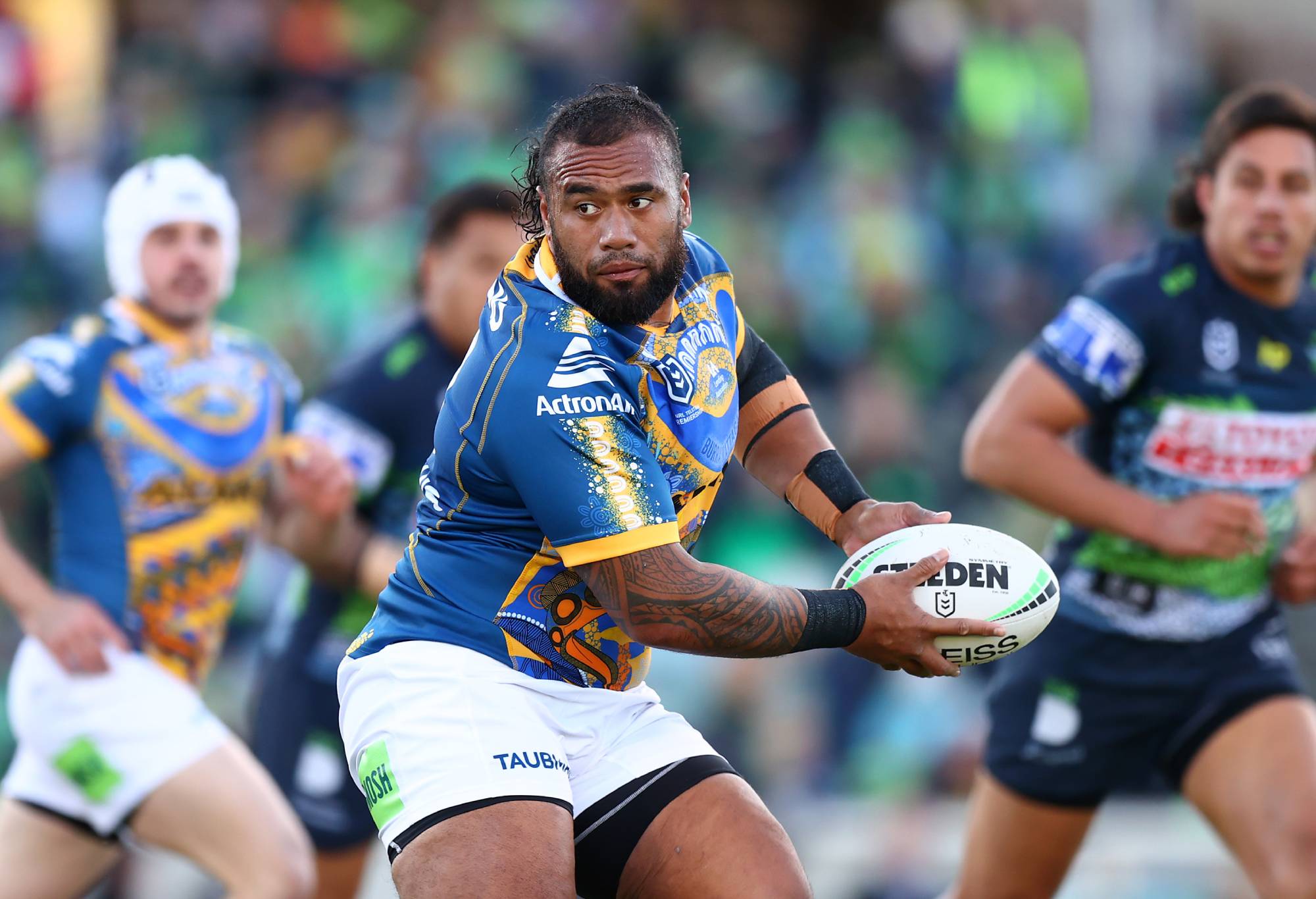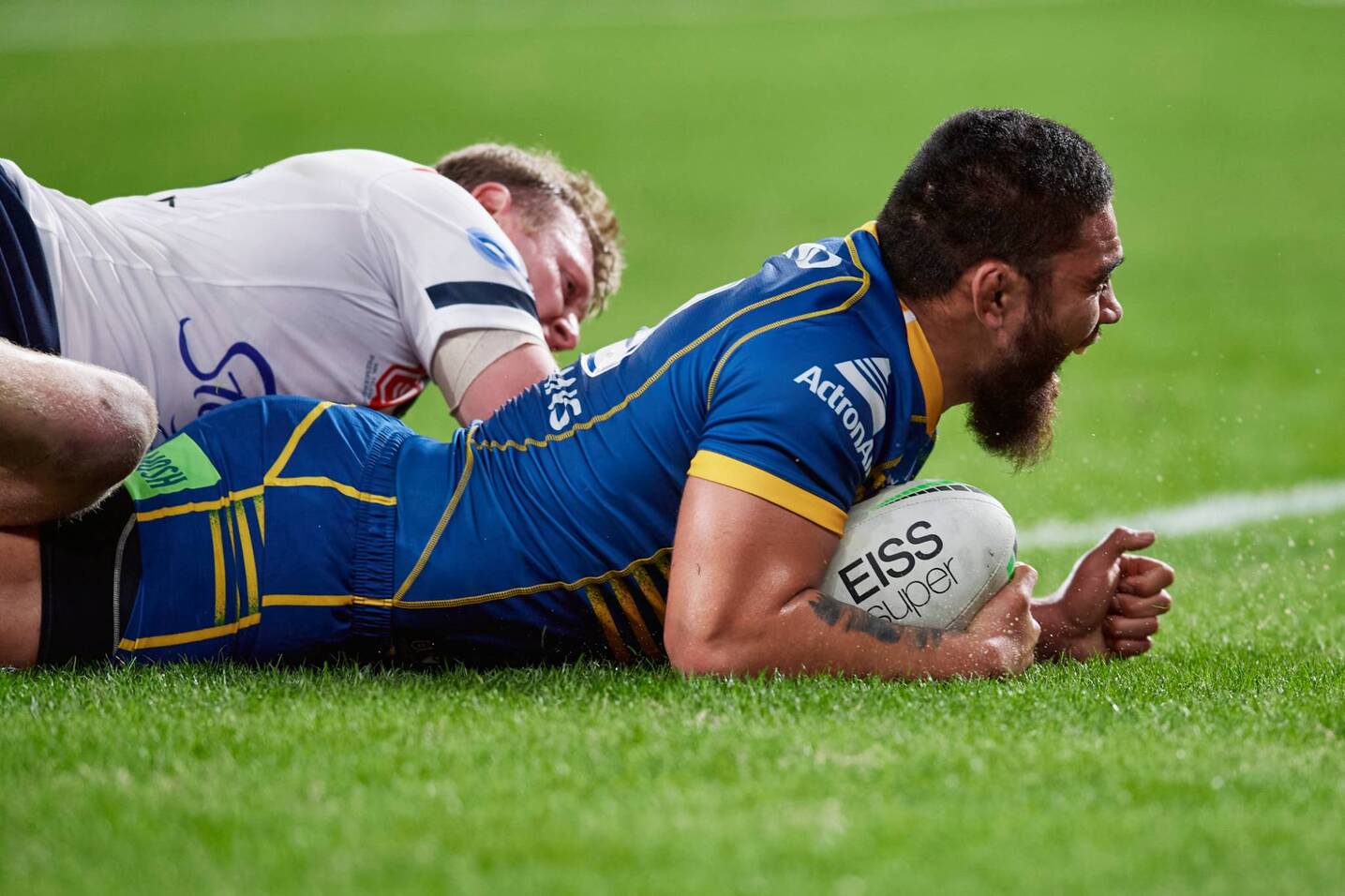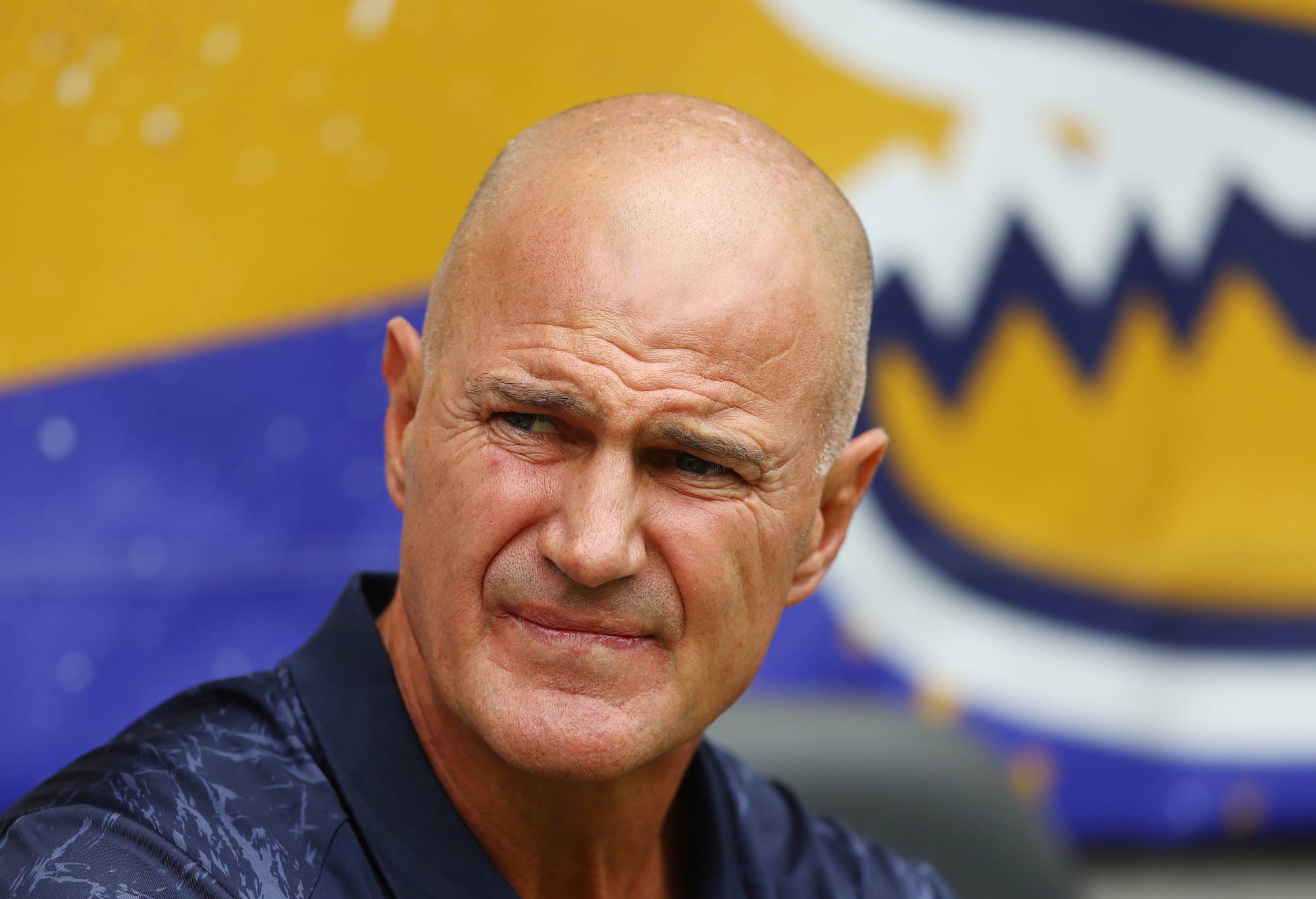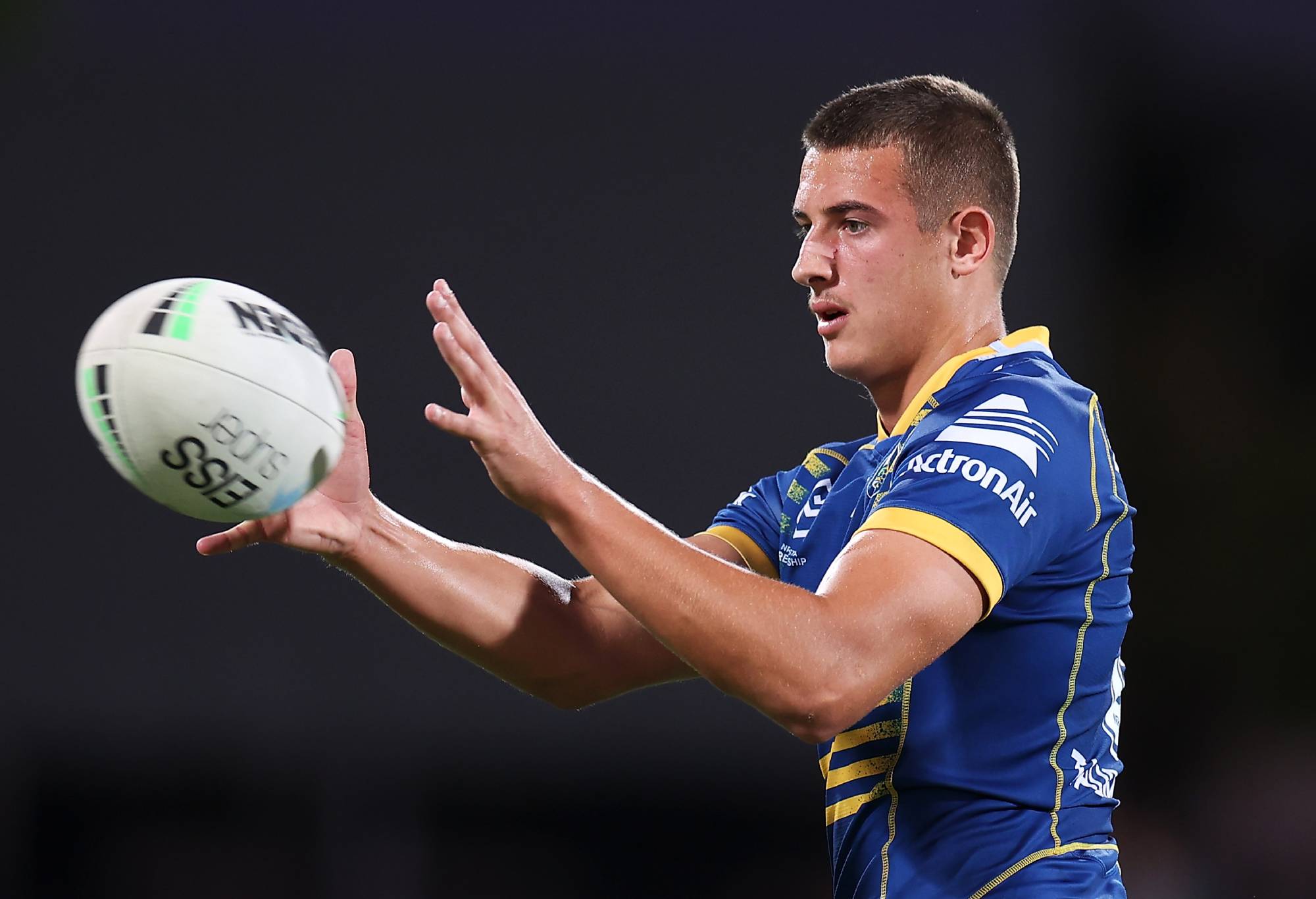If you were watching the press conference after Parramatta’s victory over Penrith on Friday night, you would have heard an exchange between coach Brad Arthur and a smart-arse Pommy journalist about Marty Taupau, whom Arthur had just admitted an interest in signing.
SAPJ: “Is the thinking there that you’ve struggled with interchanges? You’ve often barely used the fourth rotation player. Do you think someone like Marty Taupau can really help that in terms of adding a bit of bulk through the middle off the bench?”
BA: “I think he could definitely help, but I’ve got no problem with our interchange or the players that are there.
“We have got two class front-rowers like I have who get paid a lot of money, I need them on the field for as long as possible. That’s why they are on the field.”
Arthur was, to say the least, tetchy at the implication that he might not be getting the best out of his bench. His tone said one thing, but his actions say something different.
The Taupau deal was nixed by Manly coach Des Hasler, who refused to release his key impact forward with Parra set to visit Brookvale on Friday night, another rumour suddenly spread about an approach for Newcastle big man David Klemmer. The desire to bolster the middle rotation is clearly there.
It should be. Parramatta’s middle stats are very strange indeed, especially for a team with aspirations to be at the top of the table.

(Photo by Mark Nolan/Getty Images)
All the talk about inconsistency that has dogged the Eels all year has focused on their week-to-week variance in performance quality, but often, the problem has been within games – particularly their ability to sustain intensity over 80 minutes.
When Junior Paulo and Reagan Campbell-Gillard go off, there’s not much that comes on, and without that punch through the forwards, the strategy falls apart.
Arthur favours a middle-dominant style based around battering the front door in through Paulo and Campbell-Gillard, two of the biggest big men in the league, and Ryan Matterson, a lock who rarely ball-plays, but does have a killer offload.
Paulo can take up the slack that a ball-playing lock might because his passing is excellent – good hands for a big man, you might say – and he and Matterson generate a lot of second phase that brings dangerous ball-runners like Dylan Brown into play.
They also have strike back-rowers in Shaun Lane and Isaiah Papali’i who love running back on angle-changes and creating opportunities, either for themselves or others: they’re top five in the NRL for line break assists and total try involvements among edge forwards.
For more press conference fun, go watch Trent Robinson talk about angle running from the Roosters’ defeat to Parra, the Eels’ best half of the year so far, and listen to him gush about knowing exactly what they were going to do and yet being totally unable to stop it.

Isaiah Papali’i. (Photo by Brett Hemmings/Getty Images)
That’s the good news. The bad news is that on the other side of the ball, Parramatta’s forwards are really quite poor.
Their average set distance is second best in the league offensively, but 12th defensively. They’re third for average run metres total, but eighth for metres conceded. They’re fourth-worst for line break causes, too.
It’s not that surprising: none of their starting pack are known for their great defence: Paulo and RCG average around 20 tackles per game, very low for props playing their minutes, and while hooker Reed Mahoney makes the joint most of anyone in the comp, it’s fair to say he’s not winning many rucks given his size and technique.
Dutifully, on average set metres and net post-contact metres – stats that League Eye Test kindly provided – Parra regularly come out second best.
So what happens when you when, as is the case with Parramatta, you make a lot of metres with the ball but concede a lot without it? It becomes a question of how much you have the ball.
Typically this isn’t a massive issue for Parra, because they tend to win possession battles. They have played 20 games this year, and have averaged 52% of the ball, good enough for second overall behind Penrith.
The issue is that they need to have at least 52% to win a game, because other teams tend to advance quickly and get into scoring positions when Parramatta are forced to defend. They have the seventh-worst defence, and as any fule no, that will win you no comps.
Depending on an above average amount of possession is a risky place to be, because there’s a huge potential for variance and things that go wrong. Bad weather, poor handling, set restarts, good attack that forces repeats … I could go on.

(Photo by Mark Metcalfe/Getty Images)
Given their issues with middle forwards, you would think that it would be an area that they would have addressed more readily that scrambling to beat the transfer deadline.
Their first two props are elite, but after those two, the drop-off is considerable. Their forward rotation makes zero sense.
Paulo and RCG start and average 48 and 49 minutes per game respectively. Given that they are such powerful, impactful players and that Parramatta play such a forwards-first style, one would expect the backups to be of a similar ilk, but they aren’t.
Makahesi Makatoa and Oregon Kaufusi are adequate and nothing more: they don’t really break tackles, they don’t offload much and they don’t make big metres.
The third sub has generally been a lock – previously Nathan Brown and now Marata Niukore – and the fourth is anyone’s guess. It’s been Jake Arthur, a halfback, Wiremu Greig, a front-rower, Ky Rodwell, another lock, Hayze Perham and Tom Opacic, both backs and Bryce Cartwright, a utility.
It’s worth mentioning that, for all that Parra pick back-rowers on the bench in Niukore, Makatoa, Cartwright and Rodwell, they never take their edge forwards off – Lane averages 77 minutes per game, Papali’i 74 – so they are using edges as middles a lot of the time.
Whoever they pick as their final sub, they really don’t play much at all. The numbers reveal that the Eels are essentially playing with 16 most weeks, and sometimes 15.
I can’t claim the spotter’s badge for this stat: that honour goes to Elliott Richardson of Rugby League Monthly, who did the hard yards in compiling data on every 17th player to play for Parramatta this year.
It shows that they play just 12 minutes – a number that is actually inflated by the few times that injuries have forced the bench to play big minutes. Take those instances away and you’re closer to 10.
In the biggest two wins of the year – away at Melbourne and away at Penrith – Brad Arthur didn’t use the 17th player at all.
Indeed, he didn’t use his 17th at Melbourne despite the game going to golden point and despite that player being Wiremu Greig, a prop. The Eels only used five interchanges to the Storm’s nine. It makes no sense.

(Photo by Mark Kolbe/Getty Images)
In the recent loss to Brisbane, Jake Arthur got five minutes and Makatoa got 10 – and their props were getting smashed. They lost the front row metres battle 314 – 205 to Payne Haas and Thomas Flegler.
If you’re the opposition, all you need to do is weather the initial storm from RCG and Paulo and then cash in when the drop-off occurs, which it always does. Sometimes they’re far enough ahead that it doesn’t matter, or they can claw it back when the first two return late on, but all too often, it’s too late.
Arthur might say that he pays those two the big bucks to be on the park, but it’s no good them being on if they’re knackered because you can’t give them a break because the interchanges are rubbish.
This is where a Taupau or Klemmer would have been a luxury coming in. Parramatta are crying out for a short burst, high-intensity interchange prop that can play 10-15 minutes either side of half-time and take up the slack.
Taupau is the best archetype for this. He might only have 25 minutes in the legs, but rarely are they boring minutes. Guys like Spencer Leniu, Royce Hunt, Hame Sele and Andrew Fifita would also fit the bill of high-impact, short minutes, unleash hell players. It’s too late now, the signings deadline came and went on Monday at 5pm without Parra bolstering their pack.
Two of rugby league’s great truisms are that defence wins titles and that winning the middle means winning the game. Currently, the defence in the middle is Parramatta’s big problem.
Inconsistency, as it is often called, isn’t just week to week: it’s currently within games, with their first 13 excellent and the other four guys … less so.
If Brad Arthur wants to make anything of 2022, his bench rotation would be a good place to start.

































































































